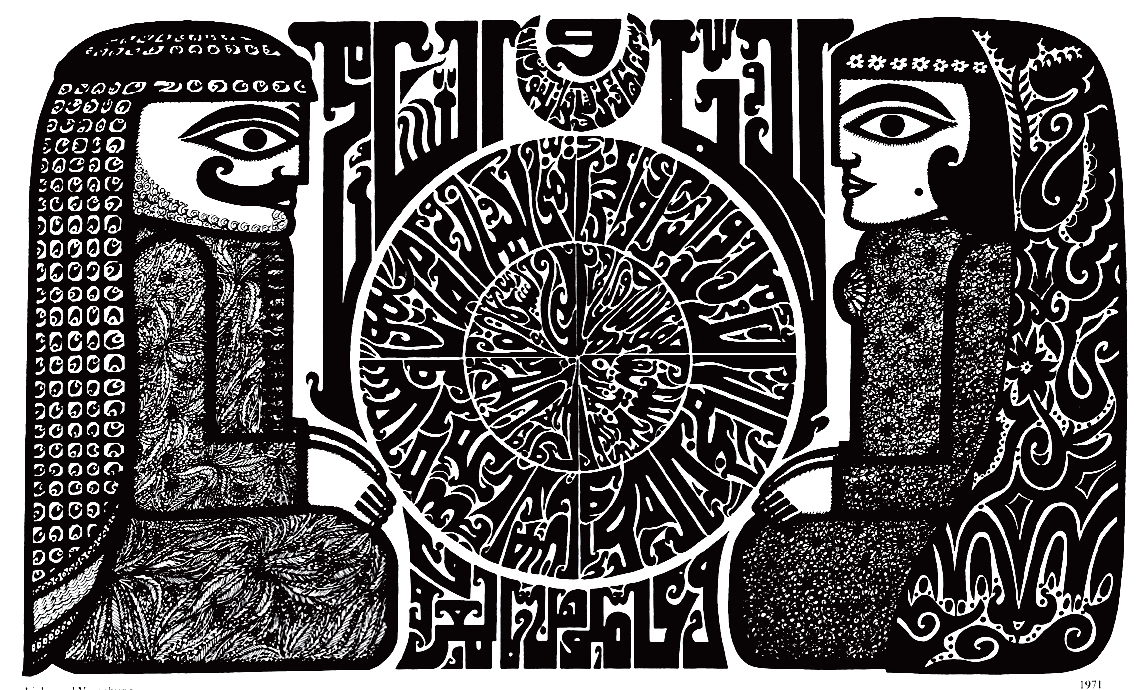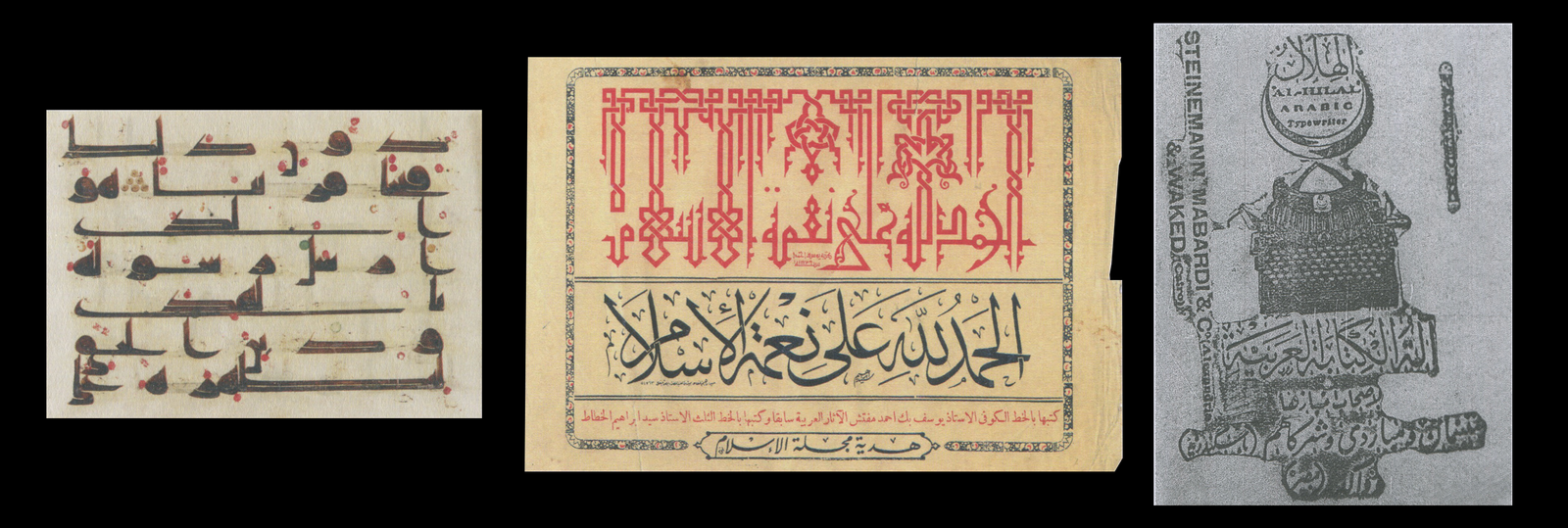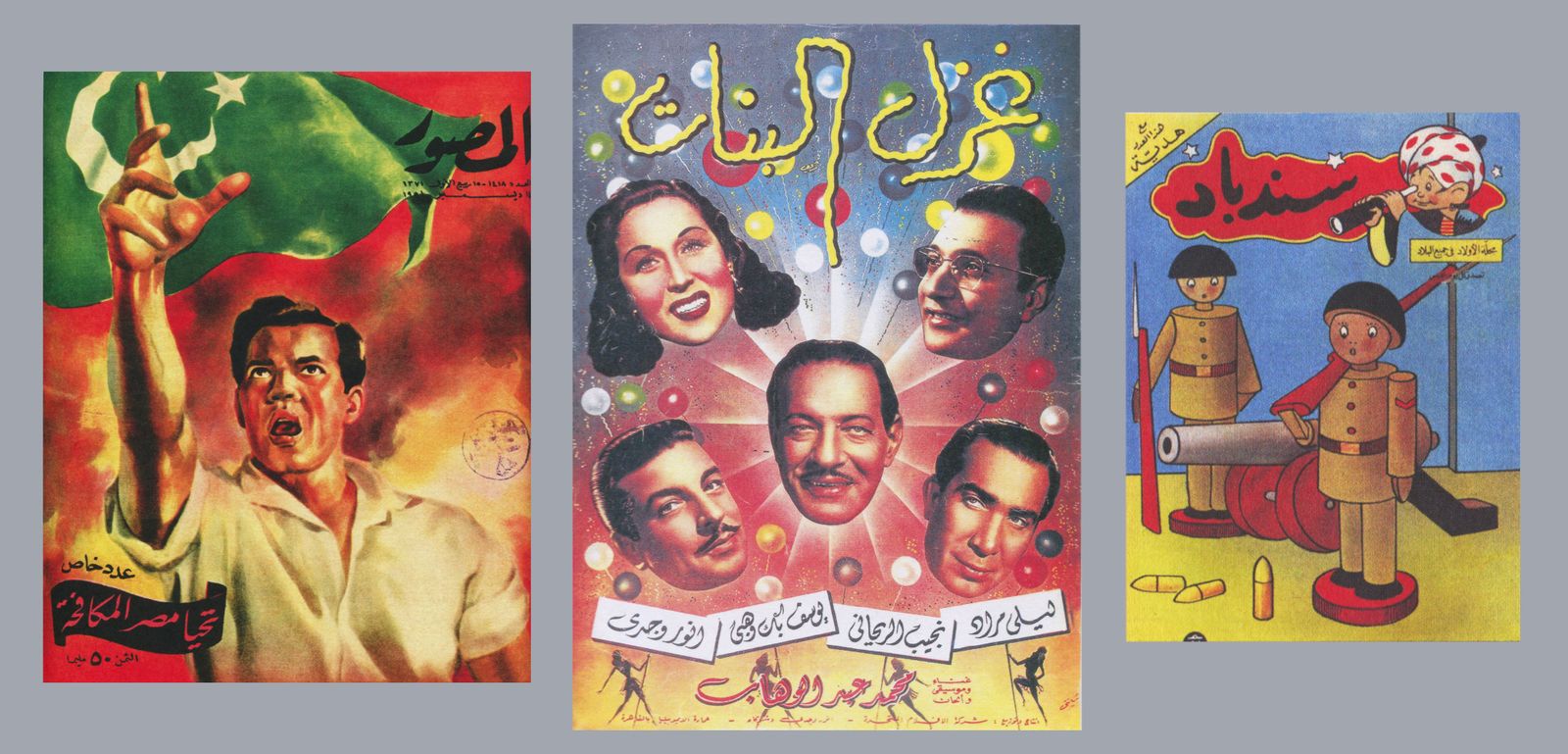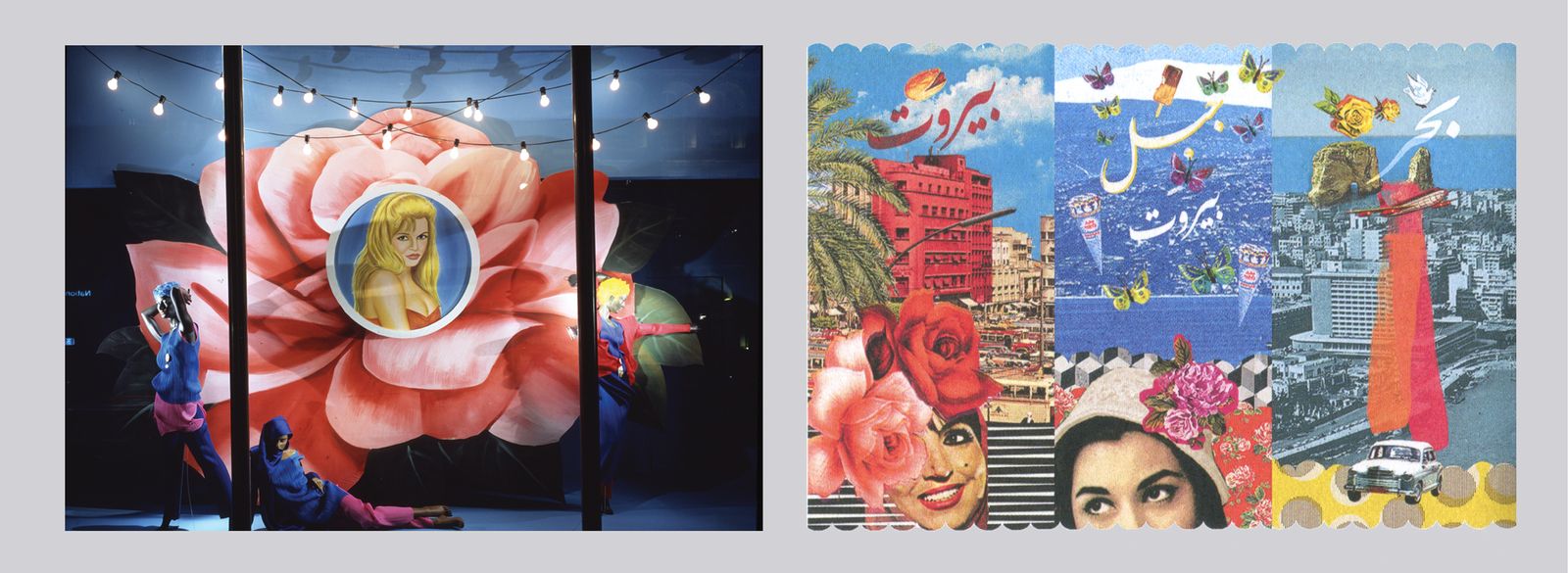Shaping collective memories

What brought you two together in creating/assembling "A History of Arab Graphic Design"? What distinct or overlapping skills, experience and personal histories did you each bring to the project?
Bahia Shehab: I planned this course into the syllabus of a programme I developed back in 2011. We went ahead and launched it, only to discover there was no textbook to teach it. But the course had already been entered into the graphic design programme’s system. When Haytham joined us as a faculty member, the idea of us possibly collaborating came up. The first meeting was hilarious. He visited me in my library and began to laugh, saying ‘When you come to my house you will understand!’ We discovered our libraries were almost identical – basically, we were already interested in the same things. When we finally met at AUC, we found we were both preparing independently to work on this book – what better reason to pool our time and resources.
For whom did you write this book? Were you thinking about your students and the needs of young graphic designers?

Bahia Shehab: We needed to teach this course and we had no textbook, so, yes, we were hoping this would be a textbook for our students and any educator interested in teaching the history of Arab graphic design – a point of reference for them to work from, if you like. This was the main reason we got together to create the book. The course was the nucleus, but our shared interest in the same topics drove the process.
What do you understand as the essence of “graphic design”? Google defines it as design working in a mode of visual communication? Do you have a better definition?
Bahia Shehab: The phrase ‘graphic design’ is becoming fluid; the world of design is currently in a state of flux. A designer is no longer simply the person who deals with the graphics or the visual communication of a medium, they are also the people who consider user experience, how the visual outcome communicates with the target audience and whether it is accomplishing its goal.
The role of designers is evolving, but the focus of ‘graphic design’ is still visual communication.
Most artists at the turn of the twentieth century used to work as graphic designers, designing calendars, packages, posters, et cetera. There was, however, as yet no clear definition or specific demand for the role of graphic designer. The increase in industrialisation following the two World Wars spawned a need for mass communication and the art of graphic design began to emerge.
What is the relationship between graphic design and art? Does the relationship between Arab graphic design and Arab art differ from that between U.S. graphic design and U.S. art?
Bahia Shehab: It’s roughly the same as in Europe or the United States. That said, Arab designers are often artists who take on design work – it’s how they make a living. As a result, many of the designers we interviewed do not document their designs, because to them it is just work.
Creating a clear lineage of Arab graphic design
In the introduction, you note that initially you had intended to focus on Arab graphic design as practiced in Arab countries, but then decided to expand to the Arab diaspora as well. What limits did you ultimately apply to the project?
Bahia Shehab: This also reflects the reality of the Arab world. Many artists and accomplished designers now reside outside the Arab world because of the political environment – be that the Palestinian situation, the Lebanese civil war, the invasion of Iraq, or the destruction in Syria. In almost every country we visited we encountered this repeating narrative: whether for political or social conditions these artists had migrated and settled in other countries.

Their work was, however, essential for the narrative of the region, so it was impossible to write the book without including their work. It proved impossible to limit Arab design to the geography of the Arab world. The result was liberating, since we were no longer confined to the area between Morocco and Iraq, meaning we could interview anybody whose work we found influential and important for the narrative as a whole.
What are the major gaps, in terms of both archival materials and the ways people think about different aspects of Arab graphic design?
Bahia Shehab: The gaps relating to archival materials are so absurd that I really don’t know where to start. Many designers did not keep their work and, it seems, no governmental institutions cared enough about this work to keep it either. We don’t even have a design museum, let alone a design archive.
Are there any misconceptions that need to be “peeled away” before we examine Arab graphic design?
Bahia Shehab: No one has any concept to begin with! We need to educate people about what constitutes Arab design. I graduated twenty years ago and when I went out into the business, people still didn’t understand what I was doing. My students, twenty years later, are faced with the same problem. People do not know what graphic design is. Before we talk about misconceptions, we therefore need to talk about the concept. People need to be educated about the need for graphic design. We are currently experiencing an awakening. Things have changed since I graduated, but there’s still a lot of room for improvement.
Why did you decide to focus on profiling individual designers and their work?
Bahia Shehab: We wanted to create a clear lineage because that is what is important to young designers. The intention was education. Our one thought was: how to engage the younger reader, the young designer? It was important for us to put faces to the names so that the students didn’t just read about history in general and design in general.

We aimed to personalise it, introducing today’s generation to the grandmothers and grandfathers of Arab design, people to whom they can look up. I grew up feeling that there had been nobody before me. I honestly had the impression that there were no Arab designers. After researching this book, I was really overwhelmed with how beautiful, how deep and amazing their work was. I wanted our students to know that – to connect emotionally with these stories. Our aim was to introduce them to the people and not just the work.
The tip of the design iceberg
How did you select the individual designers that you profile in each section?
Bahia Shehab: Some work speaks for itself. Take the Syrian visual artist Burhan Karkutli, who has been dead for years. One glance at his posters or designs and you’re directly drawn to his amazing, unique style. The first step was finding designers with a strong and distinct visual output, of whom many – unsurprisingly – were, or are, politically involved. The second aspect was what was extant. Unfortunately, not all designers had documented their work. We found ourselves exploring different archives and doing a lot of digging. Originally our list was much longer. We found nothing about some designers and then we ran out of funding, meaning we were unable to travel to certain countries – Sudan, Tunisia, Algeria, Libya. There’s so much left to discover. This is only the tip of the iceberg. I’m hopeful that there will be further editions, which will enable us to update the findings, adding to them in the form of an ongoing project.
Where was it easiest and where was it hardest to obtain design information?
Bahia Shehab: The easiest way to obtain information was by interviewing people. It was very emotional, however. I did stop at times and cry, especially when I was interviewing designers from Iraq or Syria. It was heartbreaking, even in Lebanon.

What was hard was the emotional burden of the story, the re-telling of it. Just witnessing the diaspora and the human narrative that these people went through to flee regimes, to stay true to their various causes. Information, finding archives, was also something of a challenge. Many designers had lost their archives. There was one designer in Syria who sent me pictures of his burnt studio. Yet talking to those designers still living proved much easier than finding the work of those who had passed away. About some, there was little to find out, despite everyone telling us how influential they had been.
What were some of the main drivers of Arab graphic design innovation? Does the need to communicate Palestinian resistance play a large role regionally in design development and vernacular?
Bahia Shehab: We devoted a whole chapter to the Palestinian resistance and how it drove designers regionally, but I wouldn’t say it was more influential than other resistance movements. If you look at the Arab Spring in 2011, it produced a huge amount of visual material. Historically, large political movements have always been catalysts. But there are also translation projects, and whenever there’s a governmental endeavour regarding culture, this tends to push graphic design forward.
What were some of the stories or discoveries that surprised you most as you were putting together this book?
Bahia Shehab: The weirdest thing was discovering that Burhan Karkutli either lived in the same house where Haytham lives right now in Zamalek, or across the street from him, because we found a photo of him on the balcony, in the same place where Haytham is living! A freak accident, a happy coincidence – call it what you will.
[embed:render:embedded:node:14402]
Then there were all the heartbreaking stories of the designers who were forced to go into exile. For my part, I was surprised to discover so few women designers. That was particularly frustrating. As a result the book only features four women. Compared to 76 men. My aim is to discover more women designers, maybe for another book... Women of Arab Graphic Design?
Why do you call 1990+ a “rebirth”?
Bahia Shehab: The 1990s rebirth originated in Beirut and at the American University there (AUB), which spawned a regional movement. These days, if you look at Arab graphic design globally, those at the forefront all graduated from that school. Something happened in post-civil war Lebanon that really shook visual culture in the region. We are still seeing the ripple effect of that collaboration at the AUB.
Your introduction emphasises the need for more work in this area. If you had funding amounting to, say, 10 million euros, what sorts of projects would you sponsor?
Bahia Shehab: First I would set up a design museum. Then I would create travelling exhibitions to visit different museums around the world, educating people about Arab graphic design, Arab history and Arab culture. We could also sponsor more research fellowships for writing about Arab designers and the history of Arab graphic design because, as I told you, this is only the tip of the iceberg. I think that’s it, my ten million euros are up.
Interview conducted by Marcia Lynx Qualey
